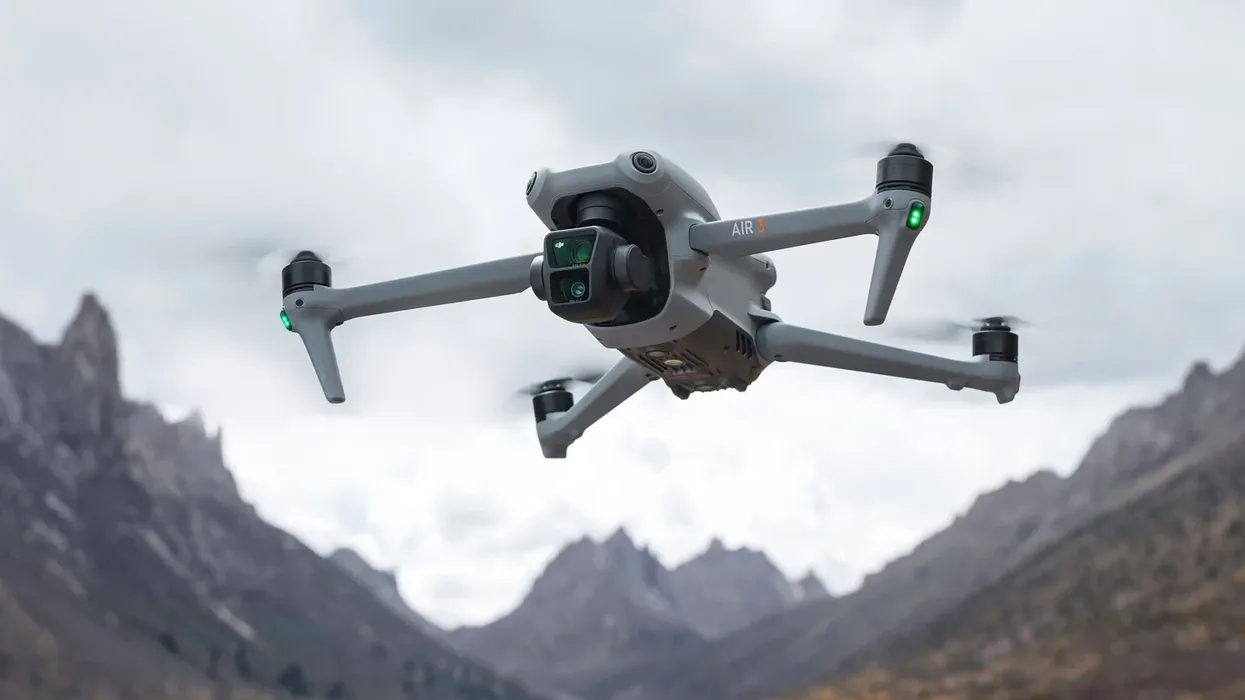Is the New DJI Air 3 a Cinematographer's Dream?
A look at how this new DJI Air 3 stacks up to its predecessors and other drone competition.

Fly high with the new DJI Air 3
While the aerial video and photo profession might constantly be in a state of ebbing-and-flowing between lucrative business and niche hobby for most, it hasn’t kept industry giants like DJI from consistently releasing new products with plenty of new specs and features.
With 46 minutes of battery life and flight time, a new dual primary camera setup, and many new design elements and controls, DJI has seemingly pulled out all the stops for the latest iteration of their compact drone system. While the Air 2 and Air 2S proved to be popular for a particular brand of aerial video and photo pros, there are questions to be said about who this new version is for, and if it is worth the investment over its own stiff competition.
Let’s take a look at the new DJI Air 3 and explore all of its bells and whistles to see if these improved flight features and metrics will ultimately help it fly above the rest… or if you’d be better off looking at other drone options for your various aerial cinematography endeavors.
The First Flight of the DJI Air 3
While some of the new specs like max flight time and updated omnidirectional obstacle sensing might be the most appealing to many aerial video pros looking for better performance, we have to start off by talking about this new dual primary camera setup. (Which itself is clearly a result of the success of DJI’s triple-camera setup on their Mavic 3 Pro.)
Featuring a combo medium tele and a wide-angle design, the DJI Air 3 features two 1/1.3-inch sensor cameras (the wide-angle being a 24mm f/1.7 and the medium tele being a 70mm f/2.8) which should unlike an array of different focal-length cinematography options. Both cameras are capable of 48MP images and support 4K HDR video at 60 fps which should enrich highlight and shadow details for stronger visual information.
It’s also important to note that Air 3 will feature new O4 HD video transmission with its six-antenna array significantly improving video transmission between your drone and devices capable of 1080p at 60 fps live streaming from up to 20 kms.
The Current Drone Videography Landscape
Still, while this new dual primary camera is indeed interesting and possibly quite helpful for different aerial cinematography assignments, DJI seems to be really positioning the DJI Air 3 as unique in the marketplace based on its overall specs and features.
With 46 minutes of max flight time (a 48 percent increase from the DJI Air 2S) and with 20 km of max transmission distance the Air 3 should really be one of the most versatile drone options currently on the market with few camera drones reaching that level of battery life.
Although the DJI Air 3 does appear to be a bit heavier than the last iteration (720 g versus the Air 2S at 595 g), the 4K video and updated omnidirectional sensing controls (which senses using front, back, left, right, and upward vision systems) you should be able to rest assured that the Air 3 is the best lightweight option now at its price point.

How does the DJI Air 3 stack up to its competition?
Credit: DJI
Specs and Pricing
Speaking of which, the rub on this new DJI Air 3 is that it’s obviously going to be more expensive than the Air 2 or the Air 2S, with a price tag currently set for $1,099 upon release. This is obviously still cheaper than the bulkier DJI options like the Mavic 3 Pro — or say the super professional Sony Airspeak S1. So, in reality, I can see it sitting quite nicely in a pocket between the two extremes.
Key Features and Specs
- Dual Wide-Angle & 3x Telephoto Cameras
- 4K/100, 4K/60 HDR or 2.7K Vertical Video
- 1/1.3" CMOS Sensors & up to 48MP Stills
- 10-bit D-Log M & 10-bit HLG Color Modes
- Up to 46 Minutes of Flight Time
- Omnidirectional APAS 5.0 Avoidance
- O4 1080p/60 12.4-Mile Transmission
- Multiple Pre-Programmed Flight Modes
- Plan Routes in Advance with Waypoint
- Smart RTH with Obstacle Avoidance
- Price: $1,099.00
- These 3 Drones Help You Start or Elevate Your Aerial Cinematography ›
- We Think the DJI Mini 3 Pro Is 249 Grams of Pure Power, Baby ›
- The DJI Mini 3 Keeps Packing Features into 249 Grams ›
- DJI Announces New Air 3S With Dual Cameras and Advanced Video Encoding | No Film School ›











